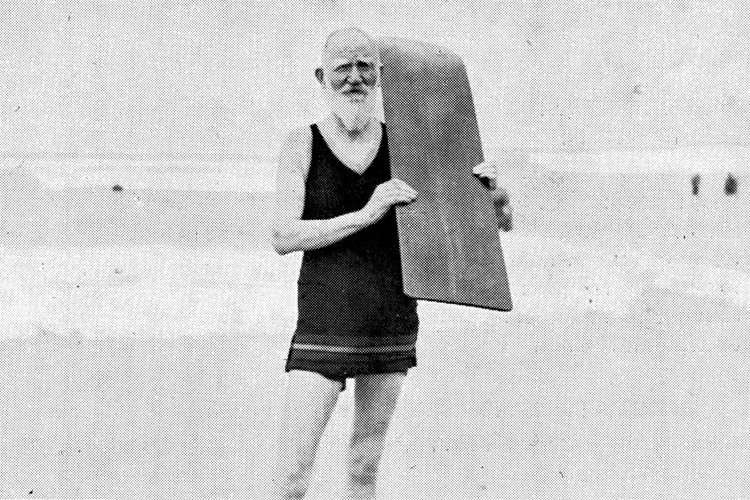If there's a sport with a magnetic force that keeps people from all backgrounds glued to the magic of riding waves, it is surfing.
The feeling of traveling across the water is second to none.
The pastime, sport, or religion (in the most extreme conceptualizations) conquered the spirits of artists, writers, and even royalty family members.
But before surfing became what it is today, there was another type of wave-riding outdoor activity. It was called bellyboarding or, as the Hawaiians refer to it, pae po'o.
Bellyboarding is probably older than Jesus, and historians often regard it as the original form of surfboarding.
Following the footsteps of Agatha Christie, who got into surfing in the 1920s, and a few years before Doris Duke's love affair with waves, one man in his 70s got stoked to the unique water gliding fever.
A Nobel Prize Winner
George Bernard Shaw (1856-1950) was an Irish playwright, critic, and polemicist.
He is best known for his satirical plays, which address social issues of his time, including "Pygmalion," "Major Barbara," and "Man and Superman."
Shaw was also a co-founder of the London School of Economics (LSE).
Throughout his life, he advocated for various social reforms and was a prominent member of the Fabian Society, which sought to advance socialism in Britain.
Shaw's sharp wit, critical eye, and commitment to social change made him one of the foremost figures in 20th-century theater and literature.
He was awarded the Nobel Prize in Literature in 1925.
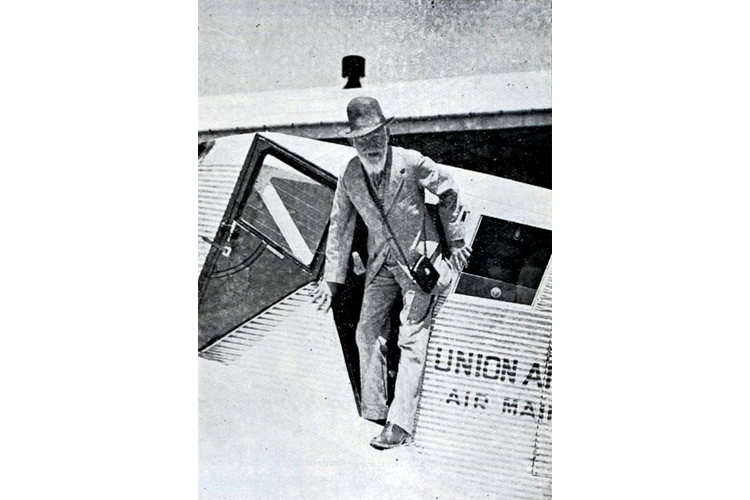
The Arrival in South Africa
In March 1932, South African Travel News reported the visit of George Bernard Shaw to the country.
The feature's title is "G.B.S. in S.A." It read:
"When it was announced in the Press that George Bernard Shaw had selected South Africa as the venue for a holiday excursion, much interest was evinced."
"To savour the shafts of Shavian satire from a distance of seven thousand miles has always been enlivening, and presentations of Shaw plays in this country, besides giving rise to animated argument, have helped to keep his name well to the fore, but to entertain the literary paladin in the flesh was an entirely new experience."
"At first, we were told that he wanted only the sunny sea voyage and that he would re-embark immediately on his return journey; then we heard that he would stay for a week or two at Capetown."
"Where would he go; what surprising things would he do; and, above all, what outrageous things would he say?"
"He arrived in Capetown, with Mrs. Shaw, in the manner of a distinguished visitor; saw and admired the beauties of the Cape Peninsula as any other tourist would; and expressed a liking for our sunshine, our women, and our fruit."
"In short, he was just a genial Irish gentleman enjoying a holiday."
"It is true that he had startling things to say to the Pressmen and the microphones, but that, as he has reminded us, is his business."
"What is most important from a South African point of view is that he is staying not one week but six and that he has decided to undertake a sightseeing trip through the 'Garden Route' and to extend his tour as far afield as Durban."
"From a literary giant whose continual search is for Utopia that is a decided compliment, and, Mr. Shaw, we are very grateful."
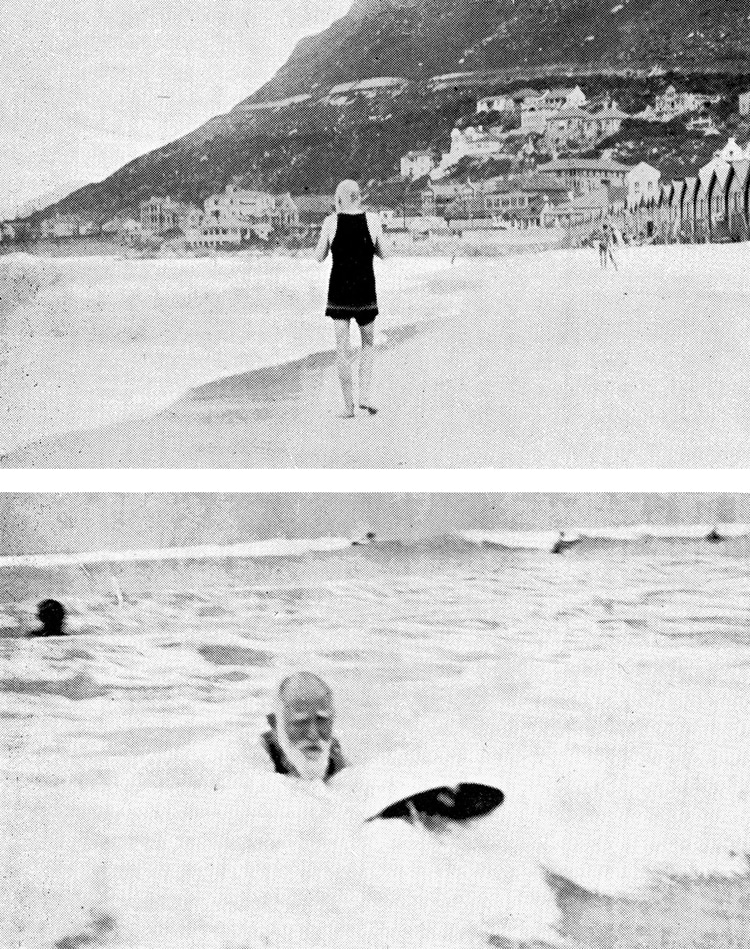
Never Too Late to Start Surfing
But how does a Nobel Prize winner in Literature discover this thing called surfing? How does a highly intellectual man surrender to the enchantment of such a physical activity?
Shaw tried something special during his extended stay in Cape Town - bellyboarding.
The lens of the Cape Peninsula Publicity Association captured the experience for South African Travel News.
The result was a three-step beginner's wave-riding guide titled: "The Three Degrees of Surfing: G.B.S.'s Initiation."
"Thanks to his habit of early rising, Mr. George Bernard Shaw has the usually-crowded Muizenberg beach to himself for his initiation into the delights of surfing."
"Armed with the first [paipo] surf-board he has handled in his crowded seventy-five years of life, Mr Shaw poses for the photographer."
"A few minutes' practice, and he becomes as adept at the exhilarating sport as many of its younger devotees."
According to South African writer and historian Eric Rosenthal, "surfboards were used at Muizenberg in 1904."
"They were made by H. W. Porter, a local boat builder, from 2.2 centimeters (one inch) pine shelving."
"The dimensions were 1.5 meters (five feet) long by 45 centimeters (18 inches) wide."
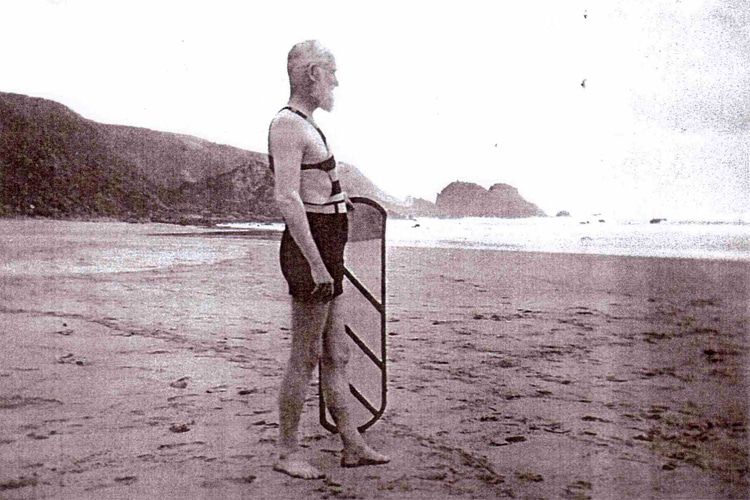
More Unexpected Surf
Shaw and his spouse, Charlotte, departed from Cape Town and drove along the scenic coastal path towards Port Elizabeth, aiming to embark on a voyage to Durban.
From there, they planned to journey northward along the African coastline. But, as fate would have it, a mishap occurred.
While Shaw was at the wheel, he navigated through challenging mountain terrains only to speed up on a smoother road.
An unexpected bump sent their vehicle crashing through a barrier and several layers of wire fencing before it landed in a trench.
Charlotte sustained injuries.
They made their way to Knysna and settled at the Royal Hotel for five weeks.
While in Knysna, Shaw took a trip to Noetzie Beach and once more enjoyed the waves.
"We don't stop playing because we grow old. We grow old because we stop playing," Shaw once stated. And isn't that true?
Contrary to popular belief, the rumors of him causing a stir by swimming without attire on this specific occasion are unfounded.
However, there are numerous other accounts suggesting he often preferred to swim that way.
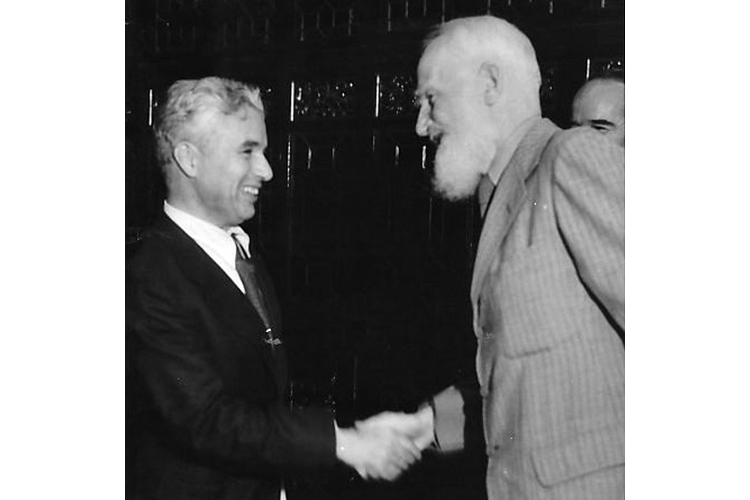
Shaw in Hawai
George Bernard Shaw visited Hawaii twice.
First in 1933, immediately after the Muizenberg surfing experience, and then in 1936.
The Irish playwright arrived in Hawaii aboard the Empress of Britain on March 16, 1933, the day before Saint Patrick's Day.
Upon arrival, he tossed aside several leis of fragrant Hawaiian flowers and, as reported by Edwin North McClellan, expressed humorously:
"Imagine my disgust. I expected to be greeted by at least a dozen beautiful Hawaiian Hula maidens, and what do I find? A representative of the Chamber of Commerce."
After watching Hawaiian girls from Kakaako of the Kewalo Club singing and dancing the hula and witnessing David Kahanamoku's entertainment show, the writer stated:
"This was the highlight of my visit to Hawaii."
"That fine, stalwart young man, David Kahanamoku - brother of the famous Duke - with his dignified bearing, his modesty and graciousness, and his deep, soft voice, expressed to me all that we dream of in regard to Hawaii. The dances were exquisite."
On their second visit, George and his wife Charlotte arrived aboard the Arandora Star in Honolulu on February 24, 1936.
In one of the first formal lunches, a reporter asked him: "What is your opinion of Stalin, Mussolini, and Hitler?"
"Stalin is the biggest man in the world today. He is the greatest statesman. Mussolini is not Stalin's equal, and Adolf Hitler is too nervous. Besides, nobody knows much about Hitler. He is unintelligible."
Then he added, "Charlie Chaplin is the best actor on the screen."
The next day, Shaw and Chaplin had lunch at the famous Waikiki restaurant, Lau Yee Chai.
There are no accounts of George Bernard Shaw getting to the waves in Honolulu, but by 1936, the controversial polemicist was already 80 years old.
